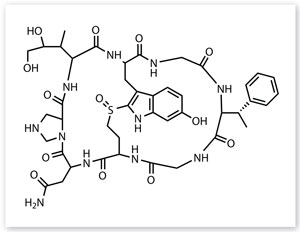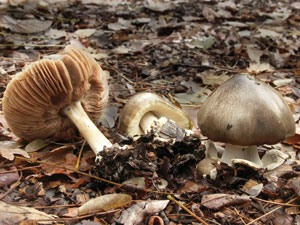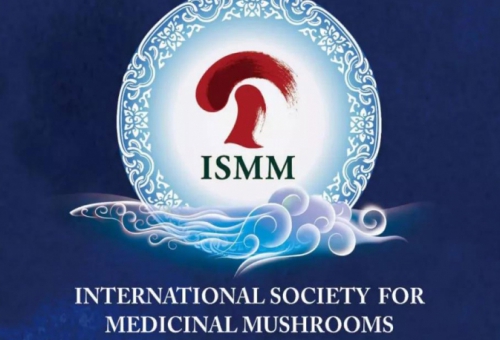
The death rate has certainly decreased over the years, thanks to the advances in treatments, according to Kibby. ‘In the US, they have more cases than we do [in the UK], so they’ve had more opportunity to try different treatments. Standard treatments usually involve large doses of penicillin and vitamin C, as well as keeping the liver and kidneys going,’ he says. Blood can be filtered using carbon-column haemodialysis units or attempting organ transplants in severe cases. ‘The latest chemical they are trialing is called Silibilin, which seems to have very effective results,’ says Kibby. Research shows that the drug works by preventing the uptake of the amatoxins by the liver cells and thereby protecting undamaged liver tissue. It also stimulates DNA-dependent RNA polymerases, resulting in an increase in RNA synthesis.4
But treatment is not always successful and it very much depends on how quickly people are diagnosed after ingestion. Victims who are hospitalised and given treatment almost immediately after ingestion have a mortality rate of around 10%, whereas those admitted 60 hours or more after ingestion have a 50–90% mortality rate.5 In spite of years of detailed research into its toxins, death cap is still the most deadly fungus known, and there’s still no known antidote for humans.
Mistaken identity
Almost all poisoning cases that Kibby has been involved in have been due to misidentification, where immigrants have picked what they thought they recognised from their native country, or based on knowledge passed down from older generations. Recently, Australian news channels reported a case where four people in Canberra accidently poisoned themselves after consuming death cap at a New Year’s Eve party. Two of them later died. They were of Asian descent, and it is believed that they may have mistaken the death caps for edible paddy straw mushrooms (Volvariella volvacea) – a common ingredient used in Asian cuisines.

Paddy straw mushrooms are edible... © Geoffrey Kibby
Brett Summerell, a fungi expert from the Royal Botanic Gardens in Sydney, Australia, told ABC News shortly after the deaths that ‘mushrooms that are poisonous in Australia have very close relatives to those that are quite safe to eat and have a very similar appearance to the straw mushroom.’ Newcombe agrees: ‘They’ve come from a culture where mushrooms like that are eaten and so probably thought they recognized them, rather than identified them.’
Since these deaths, the Australian government and the Australian National Botanical Gardens have released a factsheet on death caps.6 It provides detailed descriptions and photographs, as well as possible locations in southern Australia and what symptoms to expect. They emphasise the importance of not confusing death caps with the edible straw mushrooms that are grown and eaten in Asia. Even though the straw mushrooms are not native to Australia, a related species V. speciosa is and looks very similar to straw mushrooms. They have even been found to grow side-by-side with the death caps in some areas of Australia. Each species in the Volvariella genus has a volva at the base of the steam and gills that do not reach the stem – just like the death cap. As the guidebook3 says, ‘great care should be taken in identification to avoid confusion with the deadly white-spored Amanitas’.
Brett Summerell, a fungi expert from the Royal Botanic Gardens in Sydney, Australia, told ABC News shortly after the deaths that ‘mushrooms that are poisonous in Australia have very close relatives to those that are quite safe to eat and have a very similar appearance to the straw mushroom.’ Newcombe agrees: ‘They’ve come from a culture where mushrooms like that are eaten and so probably thought they recognized them, rather than identified them.’
Since these deaths, the Australian government and the Australian National Botanical Gardens have released a factsheet on death caps.6 It provides detailed descriptions and photographs, as well as possible locations in southern Australia and what symptoms to expect. They emphasise the importance of not confusing death caps with the edible straw mushrooms that are grown and eaten in Asia. Even though the straw mushrooms are not native to Australia, a related species V. speciosa is and looks very similar to straw mushrooms. They have even been found to grow side-by-side with the death caps in some areas of Australia. Each species in the Volvariella genus has a volva at the base of the steam and gills that do not reach the stem – just like the death cap. As the guidebook3 says, ‘great care should be taken in identification to avoid confusion with the deadly white-spored Amanitas’.
























